The news broke this morning and was headlined “The Outlook 15”
We are pleased to share breaking news that Raymond Goh has been shortlisted as the top 15 from among 50 inspiring individuals in their home countries nominated by listeners to “Outlook” – a weekly radio programme on the other BBC – The British Broadcasting Corporation aka The Beeb.
He sits in good company among indefatigable individuals who have survived against the odds and individuals who strive each day in challenging environments to make life a little better; from granting wishes to the terminally ill to being a voice for survivors of unspeakable tragedies; from Sierra Leone to our Singapore, where our nominee gives voice to the dead in order that our past has a future. The full report can be found here
The nomination was submitted at the end of April 2016 by A.J Leow.
In his submission to the BBC nominating Raymond Goh in under 200 words (the limit) he wrote:
The Bukit Brown Cemetery (BBC) was largely a forgotten site in urban Singapore until the government announced plans in 2011 to build an 8-lane highway across it and exhume for a start 4,000 graves. Raymond and his brother Charles then started to explore the site. They organized guided tours and were soon joined by more volunteers known as Brownies.
Raymond has since discovered more hidden tombs and linked many descendants to forgotten ancestors who include the real early pioneers who founded schools, banks, clan associations, public parks and lent their names to some 50 streets in Singapore. Besides his frequent sojourns to BBC in his trademark white towel and T-shirt, Raymond also combs newspaper, clan and other archives.
As a result of his research, the Brownies even got BBC listed on the World Monument list and was recognised as Advocacy Organisation of the Year 2014. Their efforts have inspired new heritage trails, award-nominated plays and new books — all thanks to our very own tomb whisperer (and Indiana Jones) who has inspired a revival of Singapore’s own history.
The news that the submission was accepted came by way of a feature interview on the BBC World Service radio programme, Outlook “They call me Singapore’s Tomb Whisperer” conducted at Bukit Brown with Raymond and his nominator. The recording can be found here
In sharing the news this morning that he had been shortlisted, Raymond posted on his FB page:
“From 50 to 15…..truly humbled and overwhelmed by this shortlist. I have all the Bukit Brown community volunteers and tombkeepers who have accompanied me on my journey for the past 10 years to thank. Without their encouragement, support and assistance, would not have walked so far. And of course my brother Charles, partnering me along the road ….”
For more on the passion and dedication of Raymond and Charles in uncovering our lost heritage, read The Goh Brothers – A Decade of Exploring, a decade of Sharing
Our best wishes and congratulations to Raymond, as someone posted, onward to the final 3.
“In the end we will conserve only what we love; we will love
only what we understand; and we will understand only
what we are taught.” (Baba Dioum, 1968.)
A quote by the Guest of Honour Senior Minister of State , Desmond Lee (National Development and Home Affairs) in his address , captured aptly the journey of the Bukit Brown community leading to another milestone in what has been dubbed ” a movement” with the launch on 16 April, 2016 of the book WWII@Bukit Brown – a collection of essays, poems and stories from the community of Brownies and descendants.
In his speech, Minister Lee recounted his first guided walk at Bukit Brown Cemetery with his constituents :
“During the visit three years ago, we learnt about the history and heritage of our pioneers from the stories shared by the Brownies.
Over the years, we have all been very impressed by the passion demonstrated by the Brownies, as they have contributed so much of their personal time, personal energy and expertise to research, document and share the history of Bukit Brown with the rest of us in Singapore.
They are an example of what the community can do to connect with, and to celebrate our history. But if we reflect on it, although Bukit Brown is a cemetery, their work is so much more than just about the past. It is also very much about our future.
The research that the Brownies did led descendants to approach them for help to identify their ancestors’ resting places, and from there, an opportunity to open up conversations about their personal and family stories, which they then shared for the benefit of posterity.
I understand that some of the descendants are here. Some of your stories and stories of your forefathers have made their way into this book. This book is a testament to the hard work and effort the Brownies had invested over the years.”
We were also honoured to have descendants among the contributors to the book grace the launch and they included the descendants of Tay Koh Yat, Tan Ean Kiam, Cho Kim Leong and Tan Kim Cheng.

Tan Keng Leck, grandson of Tan Ean Kiam with Minister Desmond Lee. The Tan Ean Kiam foundation is also one of the sponsors for the book (photo Lawrence Chong)
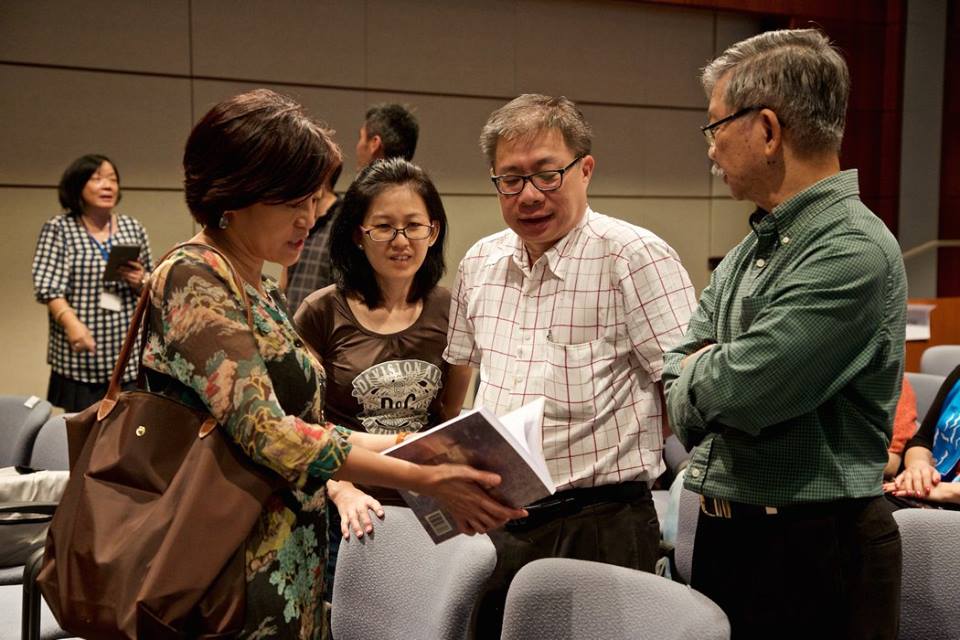
Claire Leow (Editor) with the youngest and oldest grandsons of Tay Koh Yat showing them the chapter on their grandfather.(photo Carolyn Lim)

Jenny Soh in maroon top is the niece who was saved by her Aunt Soh Koon Eng who died during a bombing raid at their home in Geylang. (photo Carolyn Lim)

Among the guests who attended, the Australian High Commissioner Philip Green and his partner Susan who have been guided by Brownies (photo Lawrence Chong)

The Editorial Team (minus 2, Yik Han and Raymond Goh) with Minister Desmond Lee. L-R Catherine, Claire, Simone, Peter, Minister Lee, Bianca, Fabian, Chyen Yee, Charles (photo Lawrence Chong)
It was an occasion for connections and re-connections.

SHS President Chua Ai Lin with Dr. Tan Cheng Bock an old family friend and Alex Tan Tiong Hee who contributed a chapter in the book. (photo Lawrence Chong)
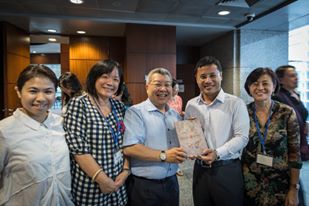
SHS President Chua Ai Lin, Catherine (editor) Kevin Tan (former SHS President and Editor of ” Spaces of the Dead- A Case from the Living 2011″) Minister Lee and Claire (editor) – Overheard, Kevin recounting to Minister it took 11 years to raise funds for the book Spaces of the Dead also published by Ethos (photo Lawrence Chong)
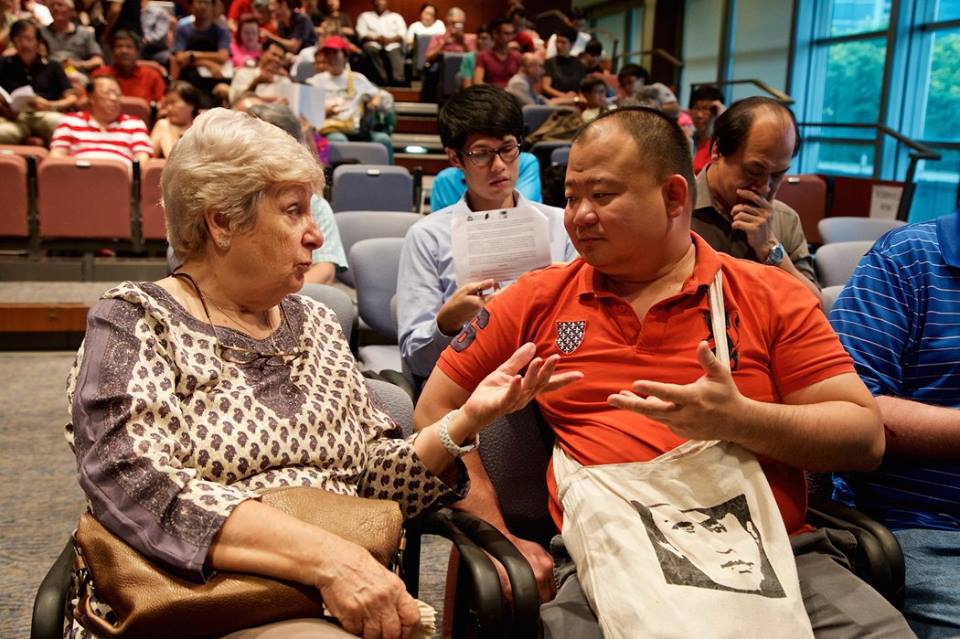
Descendant of Dr Lee Choo Neo – Singapore’s first female doctor – with CW Chan who contributed a profile piece of Lee Choon Seng – “oh to be a fly on the wall of this conversation” (photo Carolyn Lim)
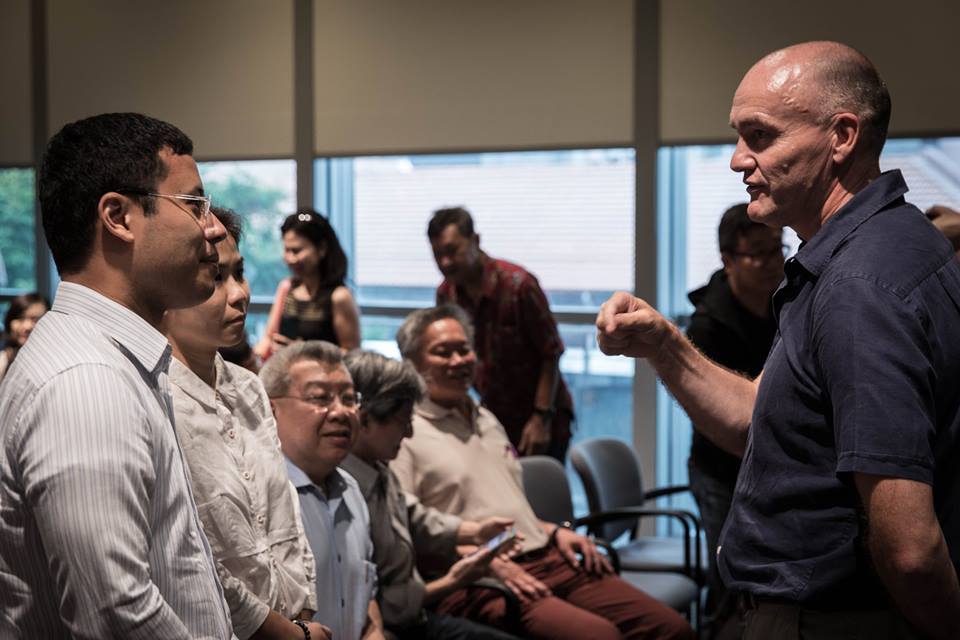
Minister Lee meeting Jon Cooper who contributed a chapter to the book and recently launched his own book Tigers in the Park on the WW II archeological digs he conducted over a span of 6 years as part of the Adam Park Project
Jon, captivated the audience at the launch with his stories of the descendants and survivors of POW camps he had met in the course of his research (photos of Jon’s presentation by Lawrence Chong)
And finally a pictorial thanks to our sponsors in no particular order :
And as previously mentioned Tan Ean Kiam Foundation is one of the sponsors.
You can support funds for the book by purchasing a copy or more here
If you would like to bulk purchase books to donate to community organisations, drop us an email a.t.bukitbrown@gmail.com
And here’s a reminder of “who” this is all about:
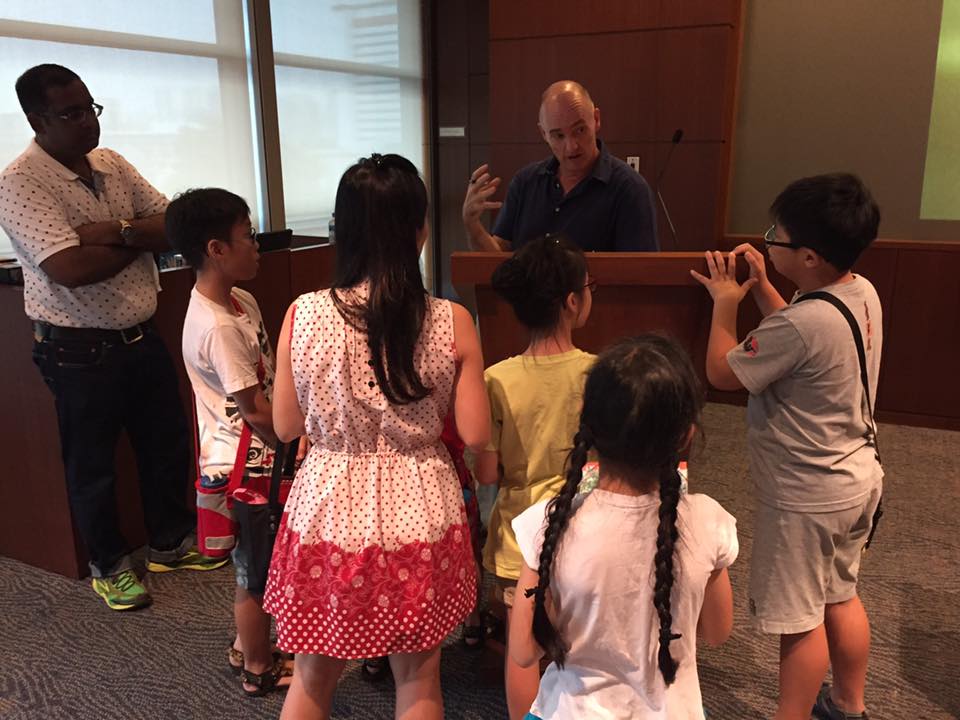
“In the end we will conserve only what we love; we will love only what we understand; and we will understand only what we are taught.” (Baba Dioum, 1968.) Photo Simone Lee
Acknowledgments:
To everyone who came, out heartfelt gratitude. To our official photographers, Lawrence Chong and Carolyn, thank you.
Look out for more stories about the launch and updates about the book in the blog under History : Books
Co Publishers:
Ethos Books and Singapore Heritage Society
It’s the end of another weekend and rarely a weekend passes when Raymond Goh aka “Tomb Whisperer” is not to be found doing ground exploration and research at Bukit Brown, nowadays often with tombkeeper Soh who helps him bush bash and lends his knowledge of the grounds he grew up in.
Today’s sharing on his “finds” on the Heritage Singapore Bukit Brown FB group included a tomb “gift wrapped” in Peranakan tiles, a newly refurbished tomb ( more signs that descendants are returning) , a tomb with a story to be unraveled, and a tomb bearing 中華民國 – Republic Of China.
Unusually Raymond was also at Bukit Brown this Saturday (he splits weekend days between his family and his passion ) to meet an independent researcher who hopes to write an article on a prominent pioneer whose tomb Raymond had found much earlier and wanted to tap his knowledge
Then I learned that much earlier in the week, Raymond got up at 4 am one weekday morning so he could help facilitate a fervent request by an international documentary crew to film an exhumation at Bukit Brown. Exhumations are private family affairs and it was indeed a testimony to Raymond’s reputation for sensitivity and discretion in such matters that he was able to persuade family to allow for the filming and be interviewed.
All in a weeks work you could say for Raymond who has to juggle his passion with his career heading a multi- national healthcare company which finds him traveling on average once a month on business trips.
It is a passion which can be traced back a decade when he teamed up at the instigation of his younger brother Charles – who heads workplace safety and health at a Japanese firm – to explore and uncover the “lost heritage and history of Singapore”. The siblings have more than a blood bond, as they leverage on each other’s strengths. It was Raymond’s interest in Chinese and regional culture and history which Charles’ sought to complement his own skills in map-reading and understanding of title deeds and ownership.
Their decade of exploration and what they have uncovered including the community which has rallied around them was documented recently in a feature called Life Extraordinare
http://video.toggle.sg/en/series/life-extraordinaire/ep8/358863
The Goh brothers intrepid exploration of forgotten places – more often than not sited in thick forested areas – paired with their investigative work trawling the archives for maps and records, have helped Singaporeans connect to their past, and sparked personal journeys into the search for their roots for a new generation of Singaporeans.
The discovery of the grave of Singapore’s foremost Teochew pioneer Seah Eu Chin (1805-1883) by the Goh brothers in November 2012 is an exemplar of their commitment and passion, one with wider resonance in 2015.
In 2011, prompted by a request from a descendant of Seah who went to school with Raymond, they found a Straits Times obituary (1883) that described Seah Eu Chin’s funeral procession, from his home in North Boat Quay to his plantation in Thomson Road, about 4.8km away from town. From the description of the funeral procession, Charles extrapolated the approximate location from a 1924 map. But to confirm whether it was indeed the grave of Seah Eu Chin, what was needed was an understanding of the Chinese practice whereby family members of the same generation used the same characters in their names. And that was where Raymond’s interest in Chinese culture and tradition came to the fore.
“Knowing the generation name, which was certified in an imperial edict he found, helped him confirm that the grave he found on Grave Hill belonged to Seah Eu Chin”. ST Nov 28, 2012, Teochew pioneer’s grave found in Toa Payoh
Of the discovery, Dr Hui Yew-Foong, an anthropologist at the Institute of Southeast Asian Studies and the appointed documentarian of Bukit Brown Cemetery commented, “This grave is of the same level of historical significance as the graves of Tan Tock Seng and Tan Kim Ching, and therefore serves as an invaluable part of Singapore’s heritage.”
For the Goh brothers it was mission accomplished. For the Seah clan, it was the beginning of the unravelling of familial connections lost after the devastation of World War II. Before the war, the 2,000-strong family of descendants spanning at least five generations had gathered regularly. The 130th anniversary of Seah Eu Chin’s death was marked at his grave site in 2013 a year later by descendants and members of the two Teochew Clan Associations he help found, the Po Ip Huay Kuan and Ngee Ann Kongsi.
For Sean Seah 39, a 6th generation descendant of Seah Eu Chin who took part in the memorial prayers, it was followed by a journey tracing the steps of personal history when he made a trip back to the ancestral home and villa of Seah Eu Chin in Yuepu village, Chaozhou province in 2014 which he documented in this video. https://vimeo.com/95650452
“When I was young, my father used to tell me stories about Seah Eu Chin. when I went to school, I learnt more about him, but many questions still lingered. When I gazed upon and touched the tomb of Seah Eu Chin, I felt a a tangible visceral connection to my roots and moved to embark on a quest for these questions to be answered, and so to the Goh brothers, I am grateful” – Sean Seah (personal communication)
Intrigued by this unearthing of history, in November 2015, the Goh brothers revealed the significance of two stone markers they found in MacRitchie area. One was inscribed with the words “Dare” in English and the other “Seah Chin Hin” in Chinese for Mr Seah’s plantation, as well as the stone and brick foundations of Mr Dare’s former home. “Dare” was George Mildmay Dare a former secretary of the Singapore Cricket Club. The two stone markers are discoveries which tell the complementary stories of the land, of our colonial past and our migrant pioneers.
The Goh brothers cache lie in ignominious stones, the kind you trip upon when taking a road less travelled but when examined closer becomes a doorway to our historical landmarks.
The curiosity as well as the passion for our history drives them to search on the ground as well as delve into archives for supporting evidence or clues. Charles was exploring the old forested area near Macalister Road when he stumbled upon a wall in the grounds of the Singapore General Hospital in September 2014. The National Heritage Board was alerted to its discovery by the Goh brothers and through further research, found that the remnants belonged to the New Lunatic Asylum which 128 years ago was revolutionary for its time, a period when strait jackets was more the norm. The perimeter wall was to allow patients to move about freely under protection. Within the grounds of the SGH carpark, which was undergoing development in 2014, was also the remnants of a burial site belonging to a Chua clan dating back to the 1860s, occupying a private strip of land then sandwiched between Tiong Bahru (New Cemetery) and Tiong Lama (Old Cemetery) that would have been referred to as Seh Chua Sua (Chua Hill) On a visit to the site led by Raymond and Charles organised by the Tiong Bahru heritage group earlier this year , participants found four gravestones cordoned off for protection in the midst of the construction site.
2015 is a significant year for the Goh brothers as it marks a decade of exploration of Bukit Brown Cemetery and the adjoining cemeteries which have become an important memory marker for Singaporeans.
It is what the Goh brothers have become most known for in the public consciousness, ironically because of the unexpected controversy which erupted in 2011 when the government revealed plans to build an 8 -lane highway across the last remaining Chinese cemetery, one with a history dating back to the 1800s. The Goh brothers had started to explore Bukit Brown as early as 2005, and uncovered the tombs of pioneers such as Cheang Hong Lim, Tan Keong Saik, Khoo Siok Wan, Seah Imm, Tan Ean Kiam, Chew Boon Lay, Chew Joo Chiat, Tan Kheam Hock – more than 30 pioneers to date whose names are immortalised in our streetscape.
By 2011, they had the best working knowledge on the ground of Bukit Brown which had closed in 1973 – the final resting place of an estimated 100,000 pioneers and whose terrain had become overgrown, the kind of challenging landscape the Goh brothers relished.
As descendants’ awareness of their familial obligations to claim and exhume their forebears grew, it was to the Goh brothers that they turned to unravel the clues to locate ancestors’ graves or other related information lost to time. Others, their interest piqued by the circumstances, started to trace if they had ancestors buried there, leading to even more leads to chase.
Many who requested help from the Goh brothers to trace their ancestors even mistook Raymond as being employed by Land Transport Authority to help them verify whether the graves of their ancestors would be affected by the highway. Both brothers were members of the Advisory Council on the Bukit Brown Documentation Project, a committee set up by the government in recognition of the heritage and historical value the cemetery. It was made up of stakeholders who could advise on documentation of the approximately 4000 graves which had to be exhumed to make way for the highway. Nonetheless, their endeavours were beyond the remit of the advisory council, and testament to the true value of the Goh brothers to the broader community.
It was this broader interest in helping descendants seek their ancestors, regardless if they were affected by the highway, that resonated with ordinary Singaporeans and residents.
Besides Seah Eu Chin, early clues in Bukit Brown also led to the discovery of Chia Ann Siang, who was not buried there. The discovery of Chia Ann Siang’s grave in a forested hilllock off Malcolm Road, also led to reunions and connections. Alphonsus Sng, 6th generation Chia Ann Siang writes,
” We were told growing up we were descendants of Chia Ann Siang on my mother’s side, but it was not until his grave was discovered by the Goh brothers, that we could confirm, from the names of his sons etched on his grave we were in fact descendants from his 3rd son Beng Chiang, who was my great grandfather on my maternal side. The reunion at the grave was a first in meeting cousins we never knew existed of my generation, descended directly from Chia Ann Siang. We have since kept in touch, exploring our shared ancestry together” – Alphonsus Sng (personal communication)
Raymond Goh estimates that he has helped to connect about 50 families whose roots are in Bukit Brown. But the Goh brothers’ contribution in a body of work that spans a decade is exponential.
Leveraging on their research, a community of volunteers came together in 2012 almost spontaneously and started conducting regular public walks in Bukit Brown to instill awareness on its intrinsic heritage and history, some later expanding on the research of the Goh brothers to conduct their own independent research. They became collectively known as the “Brownies” – a motley group from different professional backgrounds from lawyers to engineers, of different faiths, different ethnicity including a Sikh and a Catholic Indian. The youngest is below 30 of age the oldest, above 60. For them Bukit Brown has taken them to places outside of Bukit Brown and indeed out of Singapore to explore the history and heritage of our migrant roots, our diaspora. A handful have also joined the ranks of Raymond and Charles in helping to connect descendants with ancestors.
“2015, Singapore’s Jubilee, was a year to take stock of where we are heading, and where we came from. In this connection, very few ordinary Singaporeans can claim to have played as significant a role in helping us appreciate our past. Raymond and Charles Goh are arguably pioneers in their own right in exploring and sharing with the public the significance of cemeteries, particularly, Bukit Brown in linking the dots between the past and the present, the departed and those living
On a personal note, I have had the pleasure to be a former classmate of Raymond and we are both alumni of Gan Eng Seng. I was moved by the tour of Bukit Brown conducted by Raymond which culminated in homage paid at the tomb of our school’s founder. This reminded me of the Raymond Goh I remembered when he was a boy, a classmate with an enquiring mind, a strong sense of curiosity, who excelled in the sciences. I am proud that he has applied these skills in his Bukit Brown related pursuits, for he is an excellent detective and investigator of the past.” Khir Johari, Singapore Heritage Society, SHS Vice President (personal communication)
The Goh brother’s decade-long track record, and an undaunted and persevering spirit to a cause despite a lack of early support have been self-less. They have willingly shared their knowledge and skills and created space for other like-minded persons to follow in their very large footsteps. They have inspired other volunteers, but also a broader public, which has opened their eyes to alternative histories and an independent route of inquiry.
In the words of a recent reflection by journalist Lisabel Ting in the last week of 2015.
“Like a salmon swimming upstream, I think all humans have an innate desire to return to where we came from and to site ourselves in the continuum of history by knowing what has come before. …..This urge to return to our source may be particularly compelling for Singaporeans, especially the many of us who are culturally adrift and loosely moored to this island only by the strength of several generations.For the majority of us, whose parents and grandparents hail from countries across the ocean, our kin are scattered around the world, and may be culturally and linguistically distinct.Having a family tree on which to hang our heritage could, in an impalpable sense, provide a sense of deep-rooted belonging or affiliation which is sometimes missing here.” ST 29 December 2015 “ My surreal connection to my ancestral home”
Today 24 January, 2016, I came across another reflection which resonated ” We cannot protect what we do not know” and the Goh brothers have shared what they know and will continue to explore and unravel so we can also also embark on our personal journeys to learn.
“We cannot protect what we do not know”
Liberation 70 by All Things Bukit Brown
Publishers: Singapore Heritage Society and Ethos Books
Date Of Publication: 5 December, 2015
The Singapore Heritage Society (SHS) and All Things Bukit Brown (atBB) are pleased to announce their plans to publish a collection of essays and poems, mined mainly from oral history and family archives, which looks at the Second World War (1942-1945) and the impact in Singapore from the perspective of those interred at Bukit Brown Cemetery.
The book commemorates the 70th anniversary of the Liberation of Singapore under Japanese Occupation (Sept 1945) by offering new material and insights into the human tragedy of war, which adds another layer to the already vast literature on WWII in Singapore.
“The stories have taken us to the Endau Settlement in Johor, to Taiping (Malaysia) and to the beaches of Normandy in ways so unexpected they took our breath away,” said Claire Leow and Catherine Lim, co-founders of All Things Bukit Brown, a group of volunteers who work to raise awareness of the municipal cemetery. “It is a slow and at times painful unravelling of family history, lost in memory but for the persistence of descendants. It has taken seven decades for some of these fragments to be pulled together, and we see this not as a one-off book but a first step in the difficult journey of re-discovery and re-membering. The narratives also re-affirm to us Singapore’s place in regional and global historical narratives.”
It is a known fact that many who lived through the horrors of war and Occupation barely spoke about those days. The 70th anniversary of the Liberation, coinciding with an outpouring of emotion as Singapore celebrated the Jubilee of independence (SG50), unlocked the memory vaults of strangers who entrusted the editorial team with intimate familial stories and memorabilia. The compilation will span across the immediate pre- war, occupation and post-war years for the people of Singapore. It will also feature a poem of lamentation for soldiers lost in the battle at Bukit Brown, juxtaposed against recently unearthed official archival material on the battle that was fought at Cemetery Hill aka Bukit Brown Cemetery, with anecdotes from the diaries of soldiers, the pastor who bore witness to the aftermath, as well as memories of surviving prisoners of war who lived in the nearby Sime Road POW Camp. Most of this will be new, unpublished material.
SHS is pleased to support this ground-up project, as an extension of the advocacy the society encourages and the Bukit Brown cause that SHS has backed since 2011, when the cemetery came under threat of development first through a highway and later, housing.
“Bukit Brown has unexpectedly turned out to be a touchstone about the loss of heritage – tangible and intangible – in a Singapore eager to modernise and develop,” Chua Ai Lin, President of SHS. “The book is an important evolution of the civil society movement to uphold Bukit Brown as a site of national significance, and illuminate one of its more fragile narrative threads. It brings together at once the strategic and personal importance of the site, and SHS is pleased to once again support All Things Bukit Brown, which has evolved from a volunteer base guiding weekly public tours and regular customised tours, to hosting exhibitions and participating in arts programmes to reach as broad a support base as possible to save what is left of the site.”
The book, which now has the working title “Liberation70”, is ultimately a tribute to those among us, civilians and soldiers who laid down their lives. In the Ode of Remembrance read at most war commemoration ceremonies worldwide, the public repeats the key line, “We will remember them.” This is our collective act of remembrance.
The book will be co-published by the Singapore Heritage Society and Ethos with a partial grant from the National Heritage Board, under its Heritage Participation Grant. All proceeds from the book will be channelled into future Bukit Brown projects.
————————————————————
Singapore Heritage Society was founded in 1987 and is a non-profit, non-governmental organisation and registered charity with Institution of Public Character (IPC) status. It is Singapore’s leading organization dedicated to research, education and advocacy on Singapore’s history, heritage and identity. SHS is behind many significant publications on Singapore history including Syonan: Singapore under the Japanese, 1942-1945 (1992); Memories and the National Library: Between Forgetting and Remembering (2000); Spaces for the Dead: A Case from the Living (2011).
All Things Bukit Brown (atBB) is the banner for a community of volunteers who conduct independent research and guided walks on Bukit Brown Cemetery. Since they came together as a community in 2012, they have collectively organised public talks with partners such as the NUS Museum and Chui Huay Lim Club, two exhibitions and successfully nominated Bukit Brown Cemetery as the first site in Singapore to be placed on the World Monuments Fund Watch list 2014-2016. Claire Leow and Catherine Lim, co-founders of the blog, bukitbrown.com are the editors for the book, backed by a volunteer editorial team from within the community.
By Zhang Jiayi
In the early afternoon last Sunday (2 August, 2015) I dreaded my decision to go for a guided walk around Bukit Brown cemetery. However, I have promised my friends that I will turn up, so grudgingly, I made my way to the meeting point for the walking tour. Three hours and a lot of mosquito bites later, it is a decision that I did not regret.
Tombstones don’t lie. All aspects of the tombs – from the layout, the materials used, the carvings and statues around the tomb – give us snippets of information about the individuals and the Chinese immigrant community in early Singapore. The tour shed light on the stories of the individuals; after the tour, the occupants of Bukit Brown turned from random people to dignified individuals who made a difference to the social reality we experience today. Our history and social studies curriculum doesn’t do justice to the various individuals who made a difference to Singapore. While we know a significant bit about Tan Tock Seng, we overlooked the contributions of his eldest son, Tan Kim Ching, who is also buried in Bukit Brown. Tan Kim Ching not only participated actively in philanthropy, just like how Tan Tock Seng did, he also had a close relationship with the royal family of Siam (known as Thailand now), and played an important role in diplomatic relations between the Straits Settlements and Siam. It is also to my surprise that the 72nd generation of Confucius also set foot in Singapore, and is also buried in Bukit Brown cemetery *.
The diversity of the ‘residents’ of Bukit Brown was jaw dropping. Tombs of Hokkiens, Teochews, Cantonese, men, women, the rich and the poor can be found in Bukit Brown cemetery. A range of calendars was used in the inscriptions of headstones in documenting the time of birth and death of individuals. Some Chinese pledged allegiance to the Ming dynasty of China and at their time of death dreaded the fact that they would be buried in a foreign land, while others were content to call Singapore home and to be buried here. I saw for myself the intricate Peranakan tiles laying some of the tombs of wealthy Peranakan Chinese, who chose to be buried in Bukit Brown as they did not identify with their Chinese dialect clans. It was also fascinating to gain an insight on how the early Chinese viewed death – many of them viewed their tombs as their homes in afterlife, and the layout of the tombs resembled the layout of homes. Much thought was put into the building of tombs; some tombs had carvings transmitting values like filial piety, some had intricate statues symbolizing prosperity, fertility and abundance, while other had inscriptions revealing how they felt when they were buried in Singapore. The trip was especially meaningful for me, as a female.
I learned more about the contributions of early Chinese women to the cause of gender equality we have today. Ms Lee Choo Neo, the founder of a Chinese Ladies Association, lobbied for the right of females to live a more enriching life. The Association taught domestic skills, supported education for females, and sponsored a rescue home for women. She was in her teens when she started these big projects. She can be rightfully known as, according to my understanding, the grandmother of the civil society in Singapore. The experience exposed how much I didn’t know about the history of Singapore, beyond what was taught in our social studies and history textbooks. I was deeply humbled by the number of times I widened my eyes in surprise as the volunteer guides (Brownies) dropped nuggets of trivia about prominent early Chinese immigrants. There is just so much the cemetery revealed about who we are as Singaporeans before Singapore’s independence, and the place unjustified the sweeping claims about how Singapore is ‘cultureless’.
As we celebrate 50 years of Singapore’s independence, let us remember, as the guides rightly pointed out, that it is also our 70th year of liberation from the Japanese Occupation, and almost a century from the time we were first part of the Straits Settlements. It is my hope that the stories told during the tour are documented and made available to a wider audience, lest our social history be like those resting in Bukit Brown cemetery – buried six feet underground, never to be seen or heard by the future generations of Singaporeans.
*Editors Clarification: The 72nd direct descendant of Confucius had prepared his grave with the intention of being buried beside this wife who passed away before him, but he was buried at Bidadari instead. We thank Jiayi for taking time to pen her thoughts on her first visit to Bukit Brown and invite anyone who would like to contribute a blog post to write to a.t.bukitbrown@gmail.com. For information on guided walks please visit bukitbrown.com for weekly updates.
About Jiayi: Jiayi is a young Singaporean still in search of what makes her Singaporean. She is interested in issues relating to the Singaporean society as a whole, including social stratification, education and national identity.
*********************************************************
Update: For the latest on which library the exhibition has moved to please click on this FB page link
Becoming Bishan: A Heritage Exhibition
What is Bishan? A concrete jungle of million-dollar HDB flats? The futuristic, award-winning architecture of SkyHabitat and Bishan Library? Or even the bustling activity of Junction 8? These are the conventional perceptions of the young, vibrant town of Bishan – an ex-cemetery transformed into a heartland showpiece.
Our team, however, felt that there just had to be more to this rising area. Whether we were lifelong residents of the district or saw it as a mere part of our daily commute to school, we became increasingly curious about how this place came to be. Why was there even a cemetery in Bishan in the first place? Did people live in Bishan before the HDB flats were built? What was Bishan’s place in the Singapore Story?
Driven by overwhelming curiosity, we, in conjunction with the Raffles Archives and Museum, embarked upon the Becoming Bishan Project, hoping that the outcomes of our research would be able to provide a poignant contribution to our country’s jubilee celebrations.
Our first step was to analyse the development of Bishan through maps. One of our members, Yilun, is an avid map enthusiast with an especial interest in urban redevelopment. With gusto, he surfaced many old maps of the area, the oldest dating back to 1924. Through painstaking effort, he managed to highlight the stark changes in the landscape of the area, as well as match old landmarks of the area to more familiar present-day ones. The topographical studies revealed many details about the geography of the Bishan area. Today, the land that makes up Bishan is rather flat. However, the contours of old maps suggest that pre-redevelopment,
Bishan was covered by rolling hills. Many photographs also show the grave-covered hills with the HDB flats of Toa Payoh in the background. This explains the how the name “Bishan” (“Jade Hills” in Mandarin) came about. One of our interviewees even compared the view from a Toa Payoh flat to a green dragon, because of the undulating hills and the scale-like tombs on them.
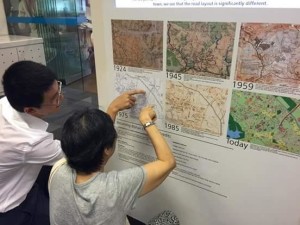
The highlight is a series of maps of Bishan tracing the landscape of changes from 1924 to the present (Photo RI Student Project Team)
There were several kampongs within the cemetery, the most notable one being Kampong San Teng, whose kampong association members still meet regularly today. Interviews with the old residents revealed a rather self-sufficient community, with a school, farms, a teahouse and a market. There was also a cinema, Nam Kok cinema, in the Bishan area that screened Chinese and Western films. A worker in the KPT coffee shop in Bishan North told us of how he used to work there, proudly showing us his old posters of Elvis Presley and actors from Hong Kong. But when we asked about people’s impressions of Bishan before redevelopment, the greatest fears were not ghosts and spirits, but secret society activity.
We also made several exciting discoveries along our research journey. One was that Bishan was once a World War II battlesite! Jon Cooper, who also runs the Bukit Brown battlefield tours, managed to surface the battalion diaries and hand-drawn maps of the Second Cambridgeshire Regiment. These documented the action at Braddell Road in the dying days of the Battle for Singapore (1942). Further research revealed that the battle positions occupied by the British troops are the present-day locations of Junction 8 shopping mall, Bishan Library and Raffles Institution. This story was corroborated by many residents, who recalled the sounds of gunfire through the rolling hills of Bishan. Another revelation we made was that the philanthropist Wong Ah Fook was once buried in the Peck San Theng cemetery and his ashes now lie in the columbarium, something that even those running the columbarium had been unaware of.
Along the way, our team has also met and befriended many diverse characters, who each have their own personal stake in Bishan. From the intriguing Mr. Molay, a Cantonese-speaking Indian man whose father once owned a hundred cows in Bishan, to the unabashed Mr. Loh, who once ate human flesh to survive the deprivation of the Japanese Occupation, it is the stories of these people who make the Bishan Story come alive. We thoroughly enjoyed the opportunity to talk to these individuals and learn more about the almost-foreign land that is the past. Later, we also spoke to current residents who told us about their thoughts and memories about this place. Though it is hard to say that the HDB dwellers of today have the same community spirit as kampong residents did, it was interesting to note how people develop, or fail to develop, attachments to Bishan.

Visitors to the exhibition have a chance to listen in on their memories of Bishan as a cemetery and its social community life then (photo RI Project Team)n
We feel immensely privileged to have had the experience of exploring Bishan’s story and curating this exhibition, and hope that you might find meaning of your own in our fruits of labour and love.
The Becoming Bishan exhibition will be officially launched on 11 July (Saturday), from 9 am – 12 noon, at the Bishan Community Library. This event will be graced by Senior Minister of State Josephine Teo. The exhibition will run at the Bishan Community Library from 1 July to 23 August, Ang Mo Kio Public Library from 24 August to 30 September and Toa Payoh Public Library from 1 to 31 October.
This is a student project from Raffles Institution, as part of the South cluster schools’ contribution to the SG50 celebration efforts.
This blog post is a team contribution from the students of Raffles Institution involved in Becoming Bishan.
atBB reviews:
atBB visited the exhibition and we are struck by the sheer breath of the history and heritage the students have been able to uncover of Bishan and how it has evolved into what it is today. From the old to the modern, the curated posters capture more than a snap shot, but with carefully chosen quotes, it has emotional resonance such that, one can be transported to a different time and space in Singapore.
Of particular interest was the coverage on how the community coped with WW 2 and provided refuge for other residents in other areas in war torn Singapore.
The exhibits on WW II was an eye opener with artefacts from both Japanese and British sides.
Augmented with video recordings of residents interviewed makes this exhibition a exemplar template for exhibitions on other neighbourhoods to emulate. Accompanying the exhibition is a pictorial booklet which value adds the exhibition and makes for a treasured keep sake for those interested in history and heritage and the transition to the modern.
atBB has been following the development of this project since the students first approached us for help in understanding cemetery culture and symbolism. We are proud to have made a small contribution to this project and have to say that full credit go to the students for taking it so far from when they first began. Congratulations and well done!
Mdm Chng of the Pang Family – A Mother of Journalists, Educationists and Revolutionaries
by Ang Yik Han
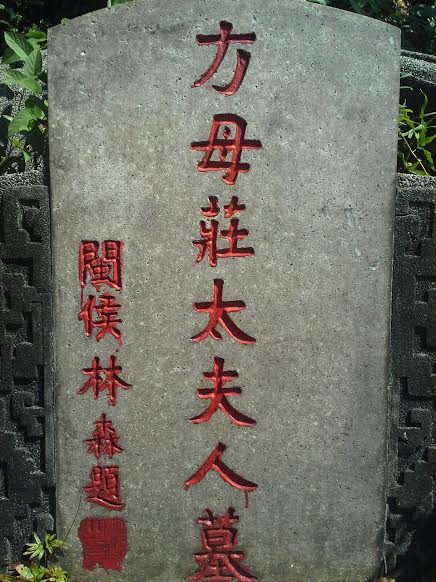
The tombstone of Mdm Chng, who died in 1936 at the age of 77. The characters on the tombstone were written by Lin Sen, KMT Chairman. (photo Yik Han)
Located at Hill 4 in Bukit Brown, the Teochew style tomb of Mdm Chng of the Pang family (方母莊太夫人) is simple and nondescript. A sharp-eyed observer will notice however that the calligraphy on the tombstone came from the hand of Lin Sen (林森), Chairman, of the ruling pre war Nationalist government in China.
Another sign of her family’s close connection to the Kuomintang was the fact in her obituary in the Nanyang Siang Pau, she was described as the mother of a martyr. This was in reference to her second son, Pang Nam Gang (方南岡), whose story was recorded in Feng Ziyou’s “Anecdotal History of the Revolution《革命逸史》” published in 1948.
Although two of Mdm Chng’s sons passed away before her, the names of all her sons were inscribed on her grave: Siao Cheok少石 (deceased), Nam Gang 南岡 (matyred), Chee Dong 之 棟, Huai Nam 懷南, Chee Cheng 之楨. Also present were the names of two daughters, though her obituary only mentioned one surviving daughter.
Pang Nam Gang had a good grounding in classical Chinese education. However, he spurned the traditional path of becoming a mandarin and chose to pursue his studies in Japan. There, he joined the Tongmenghui. Deeply committed to overthrowing Manchu rule, he devoted his time outside of studies to learning how to make bombs.
In 1905, Pang and eleven of his compatriots in Japan were ordered by Sun Yat-Sen to return to China to assist in the Huang Gang uprising in the Teochew region. Injured while preparing bombs, he was brought to Hong Kong and hospitalised, hence missed out on the action. When the uprising petered out, Pang decided to join his uncle who was a local governor in Gansu, with the intention of seeking opportunities to incite the local Hui people to rise against the Qing. His uncle was initially pleased to see his nephew, but flew into a rage when word reached him that Pang was a revolutionary. Locked up by his uncle, Pang escaped with the help of other relatives, stealing two horses and riding to Hankou, where he sold the horses and boarded ship for Japan to continue his studies. Eventually, he made his way to Penang where he became the editor of the Kwang Wah Yit Poh newspaper which was linked to the Tongmenghui.
The young revolutionary could not sit still for long. When news of the successful 1911 uprising in Wuhan reached the Nanyang, Pang rushed back to China where he raised a fighting force in his home county of Pho Leng. When Yuan Shikai was elected the first President of the nascent Chinese Republic, Pang felt that Yuan could not be trusted as he had too many links with the old regime. Disgruntled, he returned to Penang where he took up his old job at the newspaper.
Pang’s worst fears came true in 1915 when Yuan Shikai assumed the title of Emperor. This time, he could no longer abide the situation and returned to China again to fan the flames of revolution. Unfortunately, he was captured in Macau by Yuan Shikai’s agents and smuggled across the border and imprisoned. At first, he assumed a false identity and did not divulge any information even under torture. However, his fervent preaching of revolutionary ideas to his fellow prisoners gave him away and he was summarily executed. So perished a martyr of the Chinese Revolution at the age of 29.

Photo of Pang Nam Gang (reproduced from the book “The Teochews in Penang: A Concise History” by Mr Tan Kim Hong)
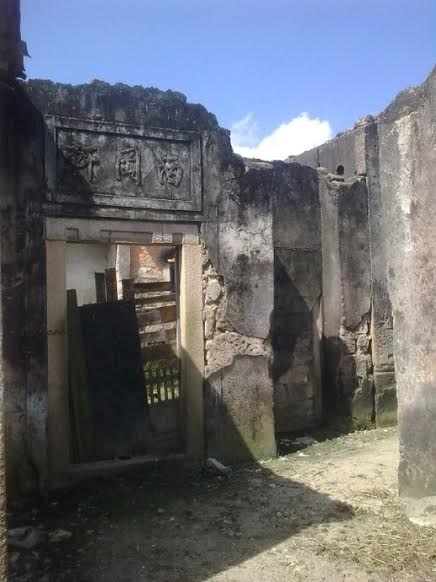
The house of Pang Nam Gang in Pho Leng (taken from the site 方益森的博客 http://blog.sina.com.cn/s/blog_756c1ab90101ipv2.html)
Mdm Chng’s obituary also mentioned that her three surviving sons were active in the areas of journalism, education and social works. Her youngest son, Pang Chee Cheng (方之楨), was in the limelight as well for his involvement in politics. A journalist, he was a KMT cadre who actively canvassed support for the party as one of the main committee members of the Nanyang branch headquarters.
In 1930, Sir Cecil Clementi became the Governor of the Straits Settlements. He had a dislike of the KMT due to its instigations of strikes during his previous posting in Hong Kong. On the day that he arrived and assumed office in Singapore, it was unfortunate that the KMT Nanyang branch headquarters chose to hold its general meeting at the same time.
One of the first acts of the Governor was to summon the KMT representatives to his office where he told them in no uncertain terms that the KMT was not allowed to operate local branches in the Straits Settlements and Malaya. A few months later, the Governor upped the ante by issuing orders to deport Pang Chee Cheng and another KMT stalwart; well aware of the situation, they left on their own for China first.
Quiet diplomacy between the British and Chinese governments behind the scenes eventually led to the deportation orders being rescinded. In later years, Pang Chee Cheng was based largely in China where he was active in the Overseas Community Affairs Council (僑務委員會) set up by the Nationalist government.
Pang Chee Cheng often met with renowned personalities of the day. So it was that when the Indian poet Tagore visited in 1927, Chee Cheng arranged for him to travel to Muar and visit Zhonghua School (中華學校, a forerunner to today’s 中化), where Tagore was received by his brother Pang Chee Dong (方之棟) who was the principal then. A graduate of a university in Beijing, Chee Dong was successively principals of Chinese medium schools in Kajang, Muar and Batu Pahat. In 1933, he may have worked as editor of a Chinese newspaper in Rangoon as well.
After the Japanese invaded, he perished during Sook Ching in Singapore, leaving behind his widow and 2 sons.
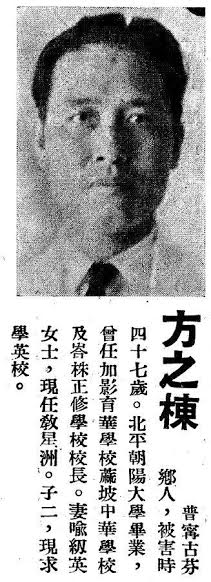
A short biography of Pang Chee Dong in the 8th anniversary commemorative publication of the Nanyang Pho Leng Hui Kuan published in 1948.
The fourth son Pang Huai Nam (方懷南) was the first editor of Nanyang Siang Pau (南洋商報) established by Tan Kah Kee in 1923. Slightly less than a month into its publication, he left the newspaper as the Straits Settlements authorities found his writing too political for their liking. He was also a committee member of the Poit Ip Huay Kuan and principal of Choon Guan School. It was mentioned in Phua Chay Leong’s “The Teochews in Malaya” that he shared the same sad fate as his elder brother Chee Dong during Sook Ching.
Mentioned as well in Mdm Chng’s obituary was one of her grandsons, Pang Say Hua (方思法). Born in Singapore to her eldest son, he was “fostered” to his uncle Pang Nam Gang; his father was convinced that his second brother would come to no good end with his revolutionary ways and hence it was better that he had a son to his name. Pang Say Hua went back to China to study and subsequently became a signaler in the Nationalist Army. He was one of the many caught up in the tumult of the times. Due to his background, he suffered after the Communists took over, being imprisoned for over ten years. After his release, he worked at various jobs and retired in 1980. His story became known when a civic organisation in the Teochew region which sought to recognize veterans of the Sino-Japanese War found him and publicised his story.
Single for life, he attended church regularly and spent his last days in a Christian old folks’ home where his favourite pastime was to watch Teochew opera. He died in Jan 2015, a month after he celebrated his 104th birthday.
Source: http://www.stcd.com.cn/html/2013-09/21/content_464908.htm
He was an old trustee of the Soon Thian Keing (Temple) who together with his wife is buried at Bukit Brown. Through his personal memories, Ho Siew Tien (1864-1960) helped shed light on the temple’s history.
This story by Ang Yik Han begins with the origins of one of the oldest temples in Singapore.
***************************************************************************************
In the 1980s, a debate took place in the local newspapers over the age of an old Chinese temple dedicated to the earth deity Tua Pek Kong in Malabar Street. Historians argued over an ambiguous phrase in one of the temple’s old stelae, which stated that the temple, the Soon Thian Keing (順天宮), was established during the years of the reigns of Jiaqing and Daoguang (“嘉道之際”). As the Jiaqing Emperor ruled from 1796 to 1820 and Daoguang from 1821 to 1850, proponents of an earlier dating for the temple argued that its establishment may have predated the founding of Singapore in 1819. However, there was no direct evidence to support this claim. No artefacts survived from the temple’s earliest days and the stele in question was erected only in 1902 when the temple was reconstructed.
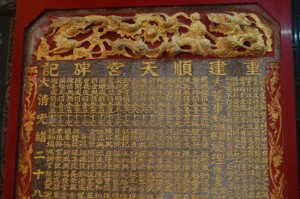
Part of the 1902 stele still preserved in the Soon Thian Keing today. It shows the main temple sponsors and major contributors to the temple’s building fund (photo Yik Han)
One the earliest known accounts of the Soon Thian Keing before its reconstruction was an interview given by one of its trustees, Ho Siew Tian (何秀填), in 1949. He recalled that when he first arrived in Singapore in 1882 at the age of 18, the temple was only a small shrine located next to a tree which housed the Tua Pek Kong statue. The shrine was refurbished by two merchants in 1888. It was only in 1902 (28th year of Guangxu’s reign) that some merchants based in the Sio Po area (the colloquial Chinese term for the part of town north of the Singapore River) came together to construct a proper building for the temple.
Other than getting a new building, the turn of the 20th century was significant for the temple for another reason. Some Hokkien merchants started a school in 1903 and then turned to the temple committee for funding to sustain the school. Thus began the decades long association between the temple and the Chung Cheng School (崇正学校) [not to be confused with Chung Cheng High (中正學校) which was managed by the Hokkien Association].
Every year, the temple provided for the school’s upkeep from the money paid by the resident monk who was contracted to run the temple. In 1916, a school for girls, the Chong Pun Girls School (崇本女校) was started and likewise funded by the temple. Committee members of the Soon Thian Keing sat on the boards of both schools. Prominent alumni members of the Chung Cheng School over the years included Lee Kong Chian and President Ong Teng Cheong.
As the number of students increased, the need for new premises for both schools was keenly felt. In 1938, the construction of a new school building at Aliwal Street was completed. This housed both the Chung Cheng School as well as the Chong Pun Girls School under one roof. It was recorded that Ho Siew Tian was a prime driver in the construction of the new school building along with the then temple chairman. A trustee of the Soon Thian Keing since 1933, he was concurrently the treasurer of the temple and the two schools, a position he held till after the war.
Hailed as one of the most modern Chinese school buildings of its day, the building has been preserved and is today the Aliwal Arts Centre.
As Aw Boon Haw donated substantial funds towards the building’s construction, the school hall was named after his company, Haw Par.
Old photos dating from 1950 which showed girls of Chong Pun exercising in the school field, today a carpark. Sultan Mosque can be seen in the background.
Ho Siew Tian ran a thriving hardware and building materials business under the chop Ho Hock Ann (何福安) at Beach Road. He also owned a number of twakows for transporting goods. As his wealth grew, he made substantial investments in properties. In 1948, he incorporated his firm as a limited company and handed over its running to his sons, who subsequently expanded the business to firearms.
It was urban redevelopment which spelled the end for the temple and the schools. In 1980s, the temple was acquired by the government for building the MRT. It moved successively to various temporary sites before its present building at Lorong 29 Geylang was completed. With the resettlement of the urban residents in the area, dwindling student enrolment led to the closure of Chung Cheng School in the 1980s as well. Its name was transferred to a primary school in Tampines.
Soon Thian Keing today in Lor 29 Geylang (photo Yik Han)
Ho Siew Tian is buried at Hill 4 together with his wife who died 12 years before him. According to obituaries in the Straits Times and the Singapore Free Press, he was one of the oldest men in Singapore at the point of his death at the age of 96. He was survived by 5 sons (2 other sons died before him), 3 daughters, 2 sons-in-law, 7 daughters-in-law, 81 grandchildren, 8 grand sons-in-law, 4 granddaughters-in-law and 37 great grandchildren.
Ang Kok Kian – A Pioneer of the Soap industry
by Ang Yik Han
It is not clear if Ang Kok Kian (洪轂堅) grew up in Penang or he travelled there from his ancestral village in Nan’an county, Fujian province. During the 1910s, he moved to Taiping with his family but left after two years for Singapore, where he felt there were better prospects.
Of the businesses he established in Singapore, the most successful was the See Sen Soap Factory (時鮮肥皂廠), one of the local firms which rose to challenge the dominance of the market by Western manufacturers then. Although sales trailed behind another local firm Ho Hong Soap Factory, its distinctive “Dog’s Head” (狗頭標) brand soap was popular in Singapore, Malaya, Borneo and Hong Kong, both before and after the war.

Dog Brand Trade Mark (Source https://moulmeincacc.wordpress.com/2014/06/03/castle-at-no-19-barker-road/)
Ang Kok Kian passed away in 1939, leaving behind 4 sons. By then, his eldest son Ang Hai Sun (洪海山) was actively involved in the family business. Not content with expanding the soap factory, he went into oil milling to ensure a stable supply of raw materials for the factory.
Although “Dog’s Head” soap has disappeared from the market for decades, the mark of this locally produced soap can still be seen today adorning the house which Ang Hai Sun built, where his descendants still reside.
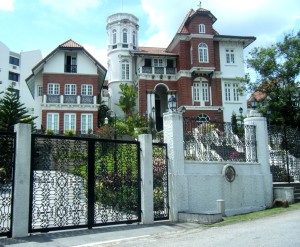
Home of the present descendants of Ang Kok Kian (source https://moulmeincacc.wordpress.com/2014/06/03/castle-at-no-19-barker-road/)
More information on his descendants here
Double tomb of Ang Kok Kian and his wife at Bukit Brown Hill 4
Researched by Ang Yik Han
Died in the year of the Horse, 19 July 1942 and survived by one son named Kah Bo (嘉謀), Hou Xiu Xi ( 侯秀西 )located at Hill 1 was said to be a good orator and a staunch supporter of the China Relief Fund led by Tan Kah Kee.
He spoke at public rallies and occasions such as temple celebrations to exhort the local Chinese to support the anti-Japanese cause. According to an account, he was beaten to death during the Japanese Occupation for refusing to cooperate with the Japanese authorities.
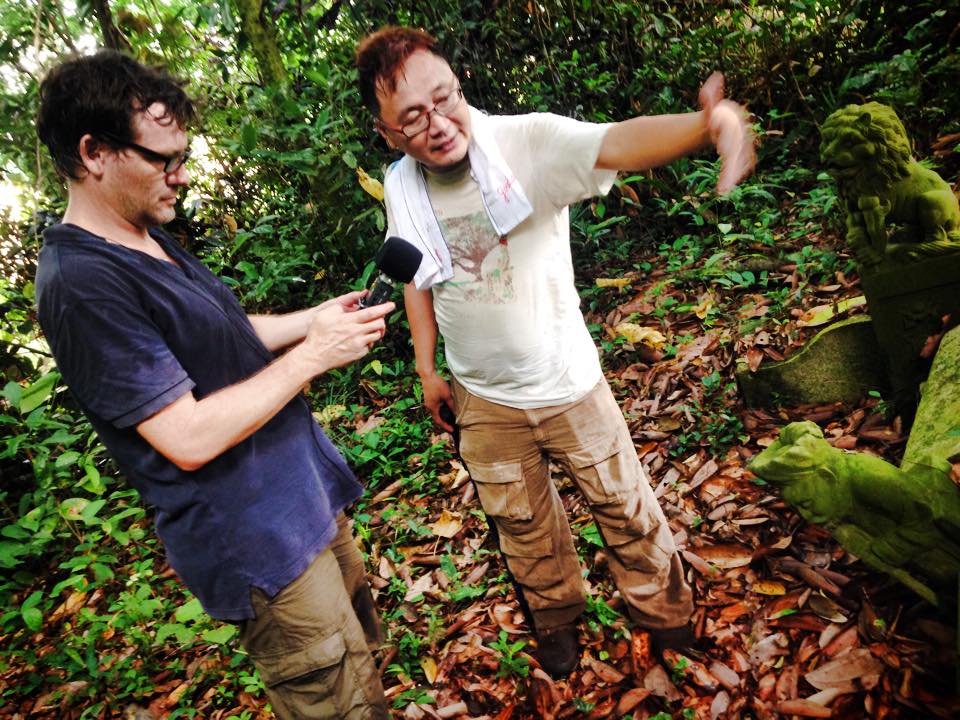




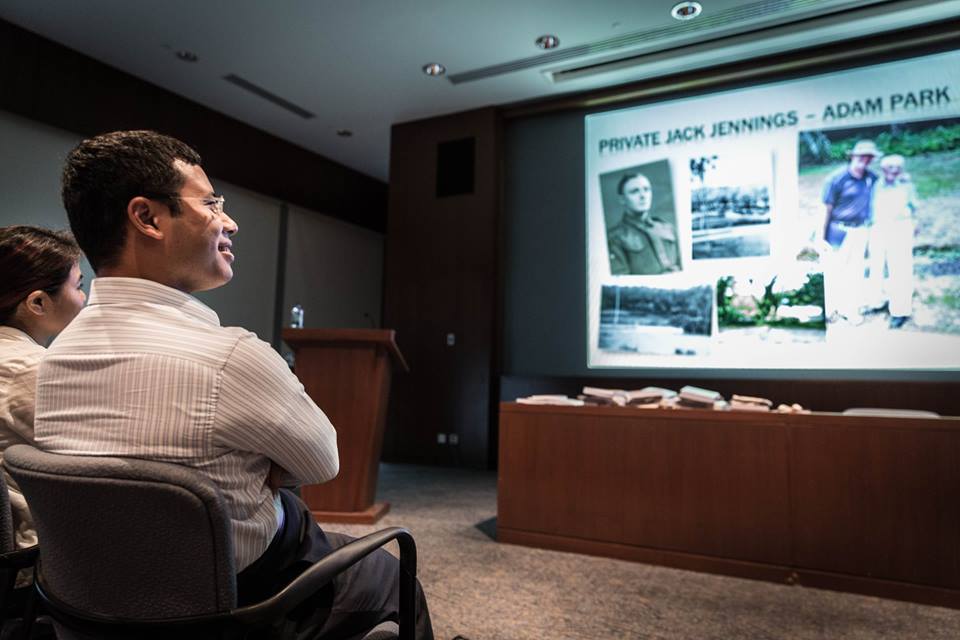

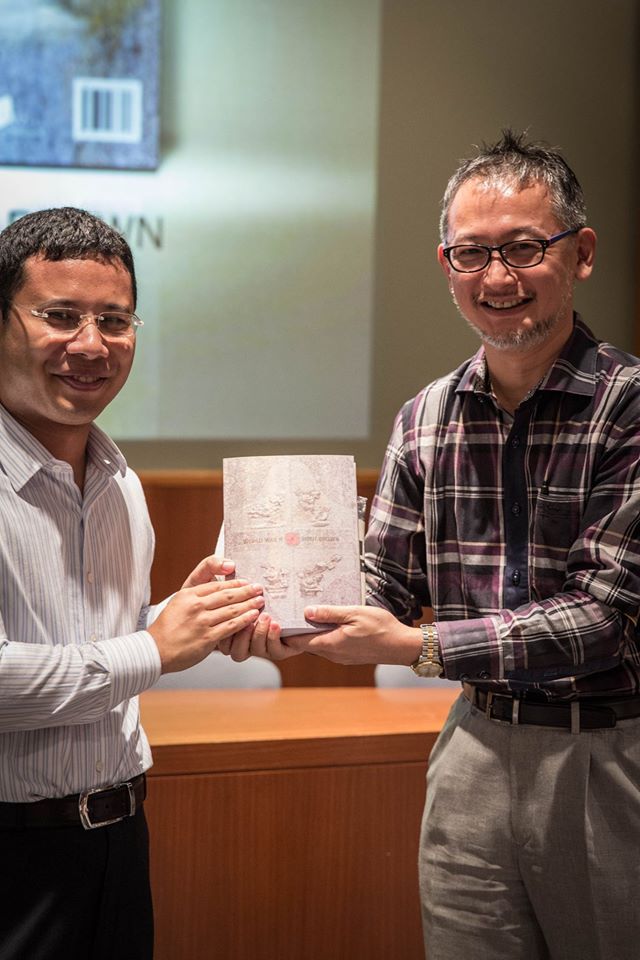

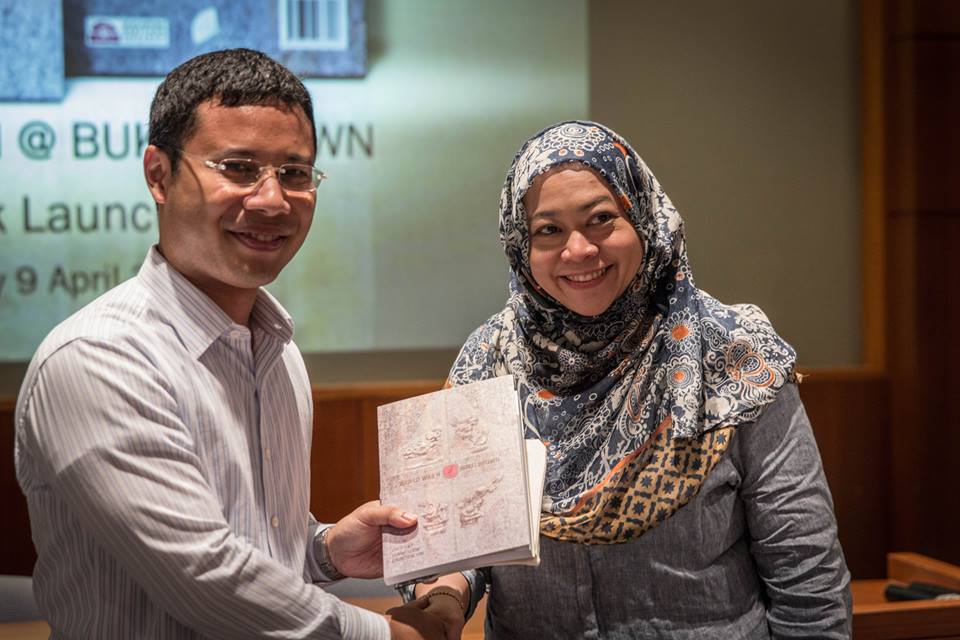

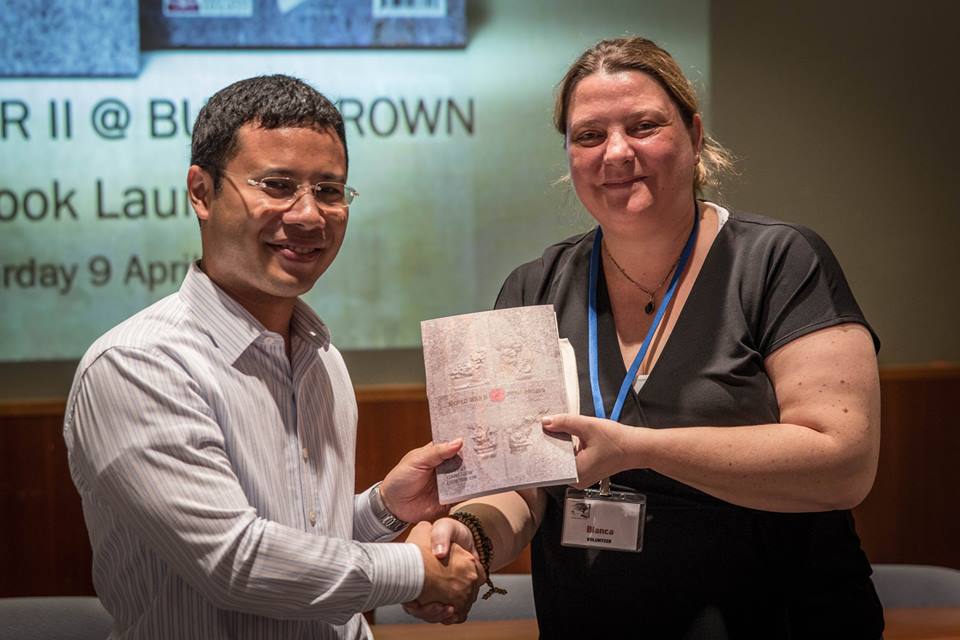
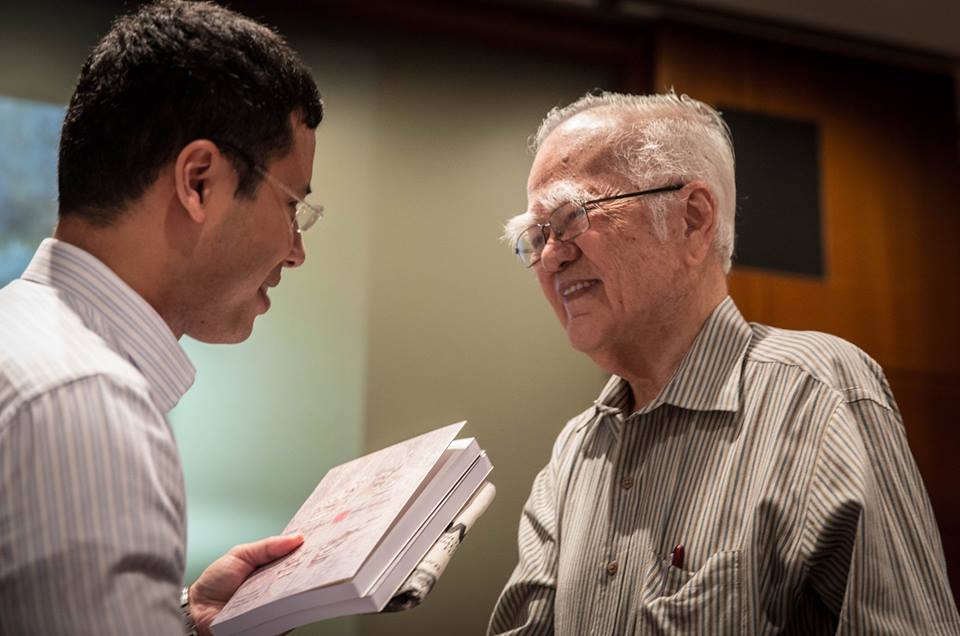


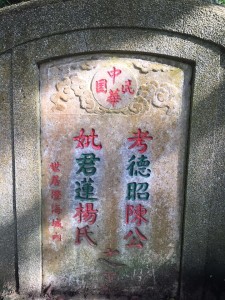

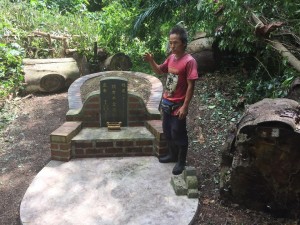


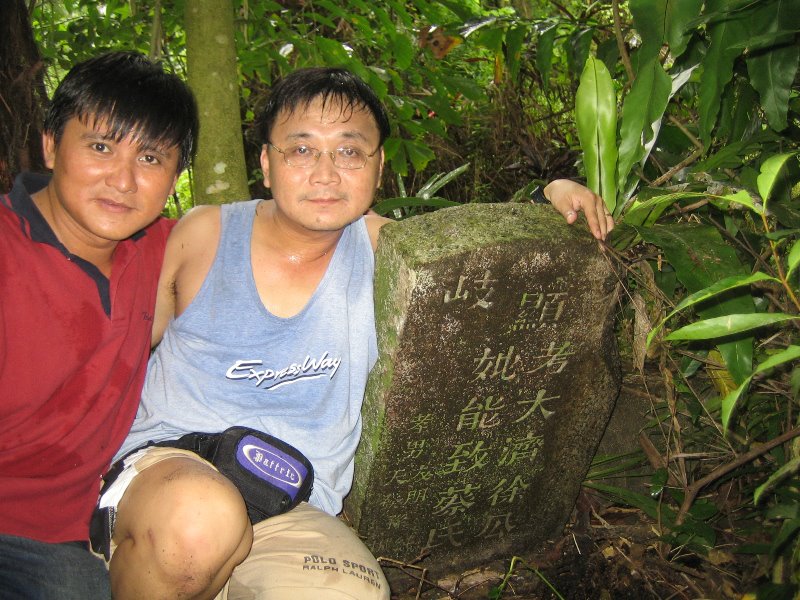
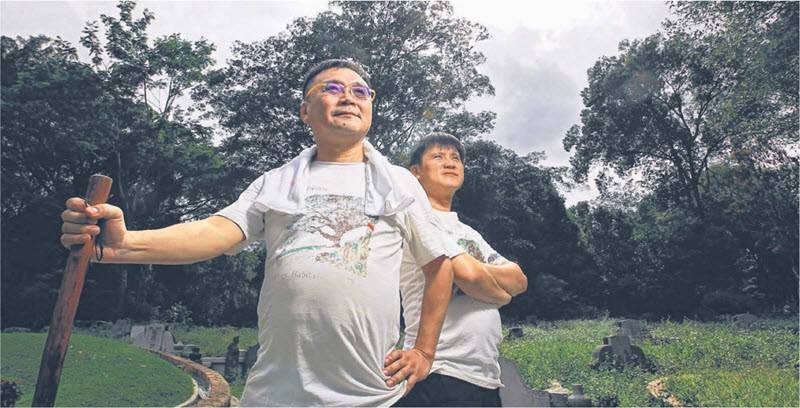
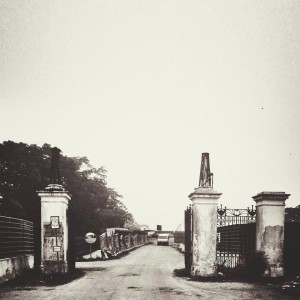


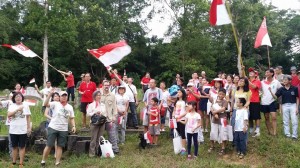




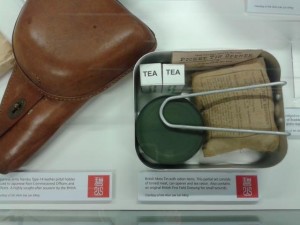

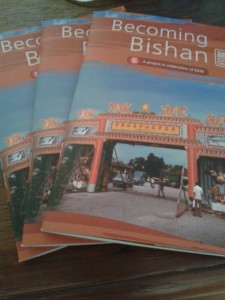
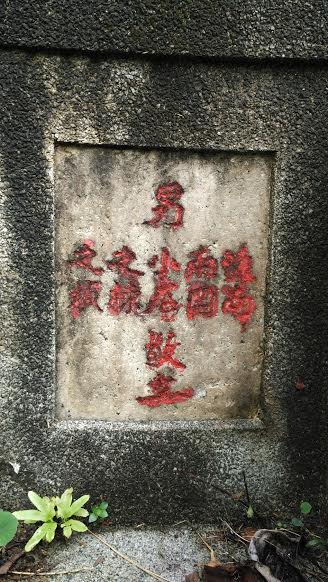



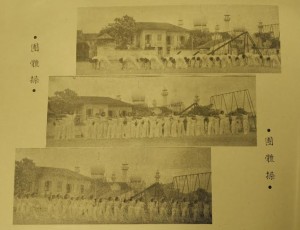
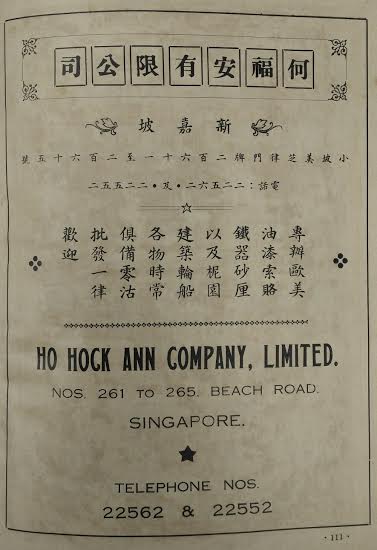

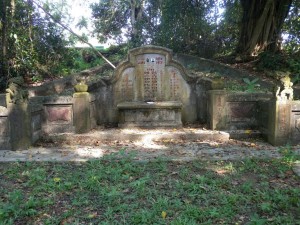

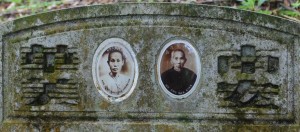

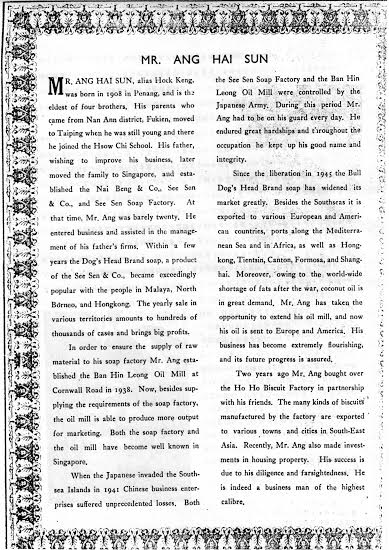

Recent Comments